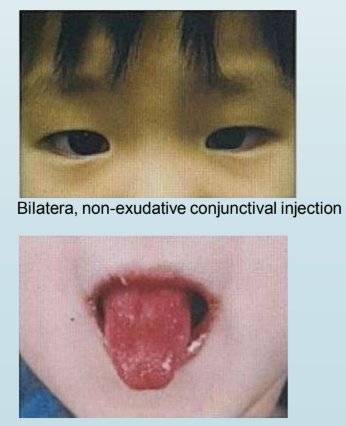A. Kawasaki disease – Explanation
fever above 39 C for more than 5 days. It is important to realise that in its early stages,
Kawasaki disease can mimic a viral exanthem and so it is often diagnosed as a viral
rash and children are sent home.
Kawasaki disease and scarlet fever have many similarities such as rash, fever,
strawberry tongue (which was not mentioned in the stem), and cervical
lymphadenopathy however the primary complaint of scarlet fever is usually the sore
throat.
KAWASAKI DISEASE
Kawasaki disease is a febrile systemic vasculitis that predominantly affects children
under 5 years of age.
The disease is more common in Japanese children hence the Japanese name
“Kawasaki” of whom described the disease in 1967.
Diagnosis
The diagnosis is made by clinical findings alone. Fever above 39 C for more than 5
days and at least 4 of the following features are diagnostic.
- Conjunctivitis
- Polymorphous rash
- Extremity changes: Erythema of palms and soles that later leads to desquamation
- Mucous membrane changes: Red, fissured lips, strawberry tongue
- Cervical lymphadenopathy
Prompt recognition is important as aneurysms of the coronary arteries are potentially
devastating complications and treatment with immunoglobulins reduces their incidence.
These coronary arteries are affected in around 30 percent of children within the first 6
weeks of illness. Hence, an echocardiogram would be an important investigation during
the child’s stay in the hospital.

Strawberry tongue and bright red, swollen lips with vertical cracking and bleeding

Management
- High dose aspirin – Reduces risk of thrombosis
o Once fever subsides and inflammatory markers fall, low dose aspirin is given
until echocardiogram is performed at 6 weeks to exclude aneurysm
- Intravenous immunoglobulin – If given within first 10 days, reduces the risk of
coronary artery aneurysms
